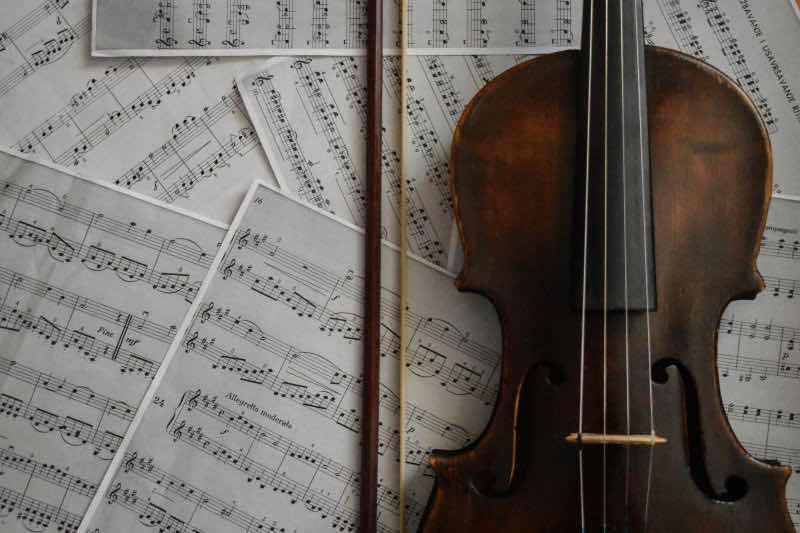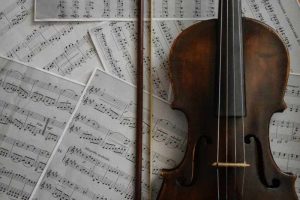When someone decides to learn to play an instrument, one of the first things to do is to look into buying the instrument. This process varies depending on the instrument, and is especially unique when it comes to buying violins, or fiddles. Many instruments are mass produced in factories, producing batches that all sound the same. On the contrary, fiddles are not usually built this way. The best sounding ones are handmade, and therefore, all unique.
When musicians are looking to buy a fiddle, the most useful strategy is to go to a local luthier or instrument builder, and try out several to find the one that best suits you. This is very effective because it means anyone can find the instrument of their dreams, whether they’re a classical violinist or an old time fiddler. There may not be one best violin for fiddle playing, but there are several factors that change how a violin sounds and feels to play. Taking all these factors into account will help find the best instrument for anyone’s needs.
1. Sound post placement
The sound post is a piece of wood inside the fiddle that helps keep it from collapsing under the pressure of the bridge and strings. But the sound post can be moved in order to change the instrument’s sound. Depending on the placement of the sound post, the fiddle might sound more hollow, rich or bright. Moving the sound post can also change the volume of different frequencies in the fiddle’s range. A fiddler might prefer a different sound than a classical violinist would, so it’s good to ask a luthier about adjusting the sound post on your fiddle if you’re looking for a different sound.
2. Fingerboard/bridge height
The fingerboard is a part of the violin that can be manipulated to change the comfortability and playability. It is usually set at an angle in order to follow the angle of the strings. The height of the bridge also can be changed to manipulate the string height above the fingerboard. Usually, it’s more comfortable to play on a fiddle with a low string height, because it takes less effort to press down the strings. If your fiddle’s string height is too high, you can take it to a luthier to get it adjusted.
3. Age of instrument
It’s common for people to prefer playing older instruments, because the wood has had time to settle and therefore the sound of the fiddle has developed more. Many people will say that you don’t really know how your instrument sounds until you’ve played it for ten years. This applies to all wooden instruments. In reality, the sound of a violin will always be slowly changing, and the general consensus is that older violins do sound better than new ones.
4. Thickness of wood
The thickness of the top and back of the violin have a huge effect on the sound produced. Similar to the placement of the soundpost, the wood thickness can change the violin’s tone, volume, and overall sound. This is something that is calculated very precisely by the violin builder in order to optimize sound.
The above included integral parts of the fiddle that either can’t be changed, or require knowledge of instrument building and repair to manipulate. There are also several things that anyone can do to change the sound and feeling of the instrument, regardless of their previous knowledge and experience in violin building.
5. Strings
There are a few very popular sets of fiddle strings, including several which are made by the brand D’Addario, and some others by Pirastro. When starting to play the fiddle, it’s a good idea to try different sets of strings the first few times you change them, and take note of the differences in sound. The other variable when it comes to strings is the tension (or gauge). Violin strings usually come in either light, medium, or heavy tension.
6. Bow
Violin bows come in many different variations, including different kinds of wood (or another material), and different kinds of hair. The kind of rosin you use will also affect the bow. Since there are so many choices when it comes to the bow, it’s usually recommended to try several different bows with the violin that you choose to play. Like the violin, there’s no such thing as the perfect bow. But there may be the perfect bow for a particular violin. Try to search for the bow that matches well with your violin.
7. Shoulder rest
There are lots of different shoulder rests on the market, many of which are expensive, promising the best quality. Although I’m sure those are wonderful, the shoulder rest is a very simple contraption used to make the fiddle more comfortable to play, and even the most cheap ones can work perfectly fine. But, since everyone’s body is shaped a little bit differently, the important thing here would be to seek out some differently shaped shoulder rests and try them to see which is the most comfortable for you.
Best Violin for Fiddle Playing? There’s No One Right Answer
This is only a short introduction to the variables that change the sound of a violin. It’s very important to keep all these things in mind while buying a violin, not because they will make or break your experience as a fiddler, but because they will change how you feel and sound as your learning progresses. It’s important to know that there is no best violin for fiddle playing, because everyone has different preferences when it comes to music style and sound. Luckily, due to its versatility, this makes violin one of the best instruments to learn!
Alani Sugar

